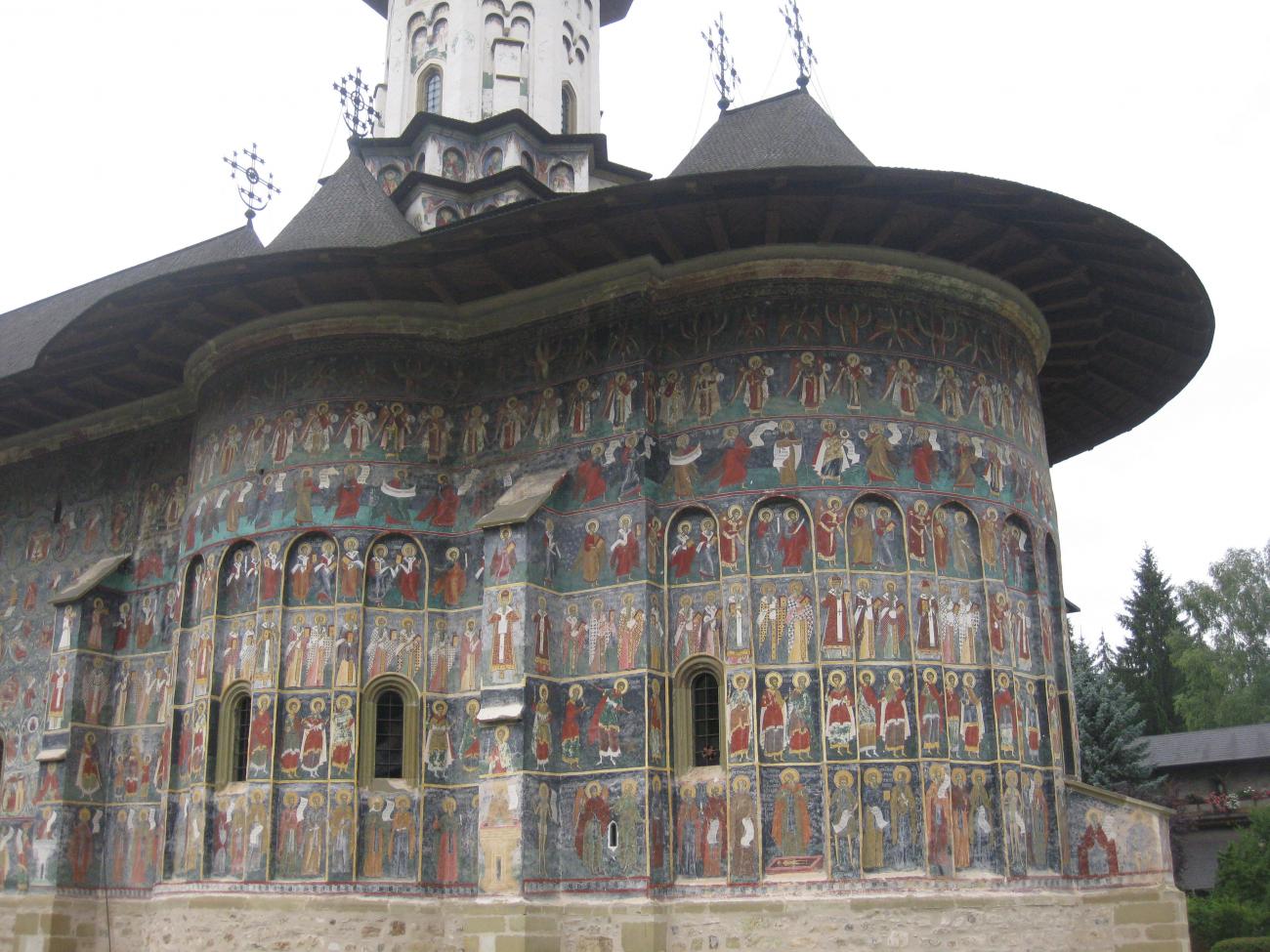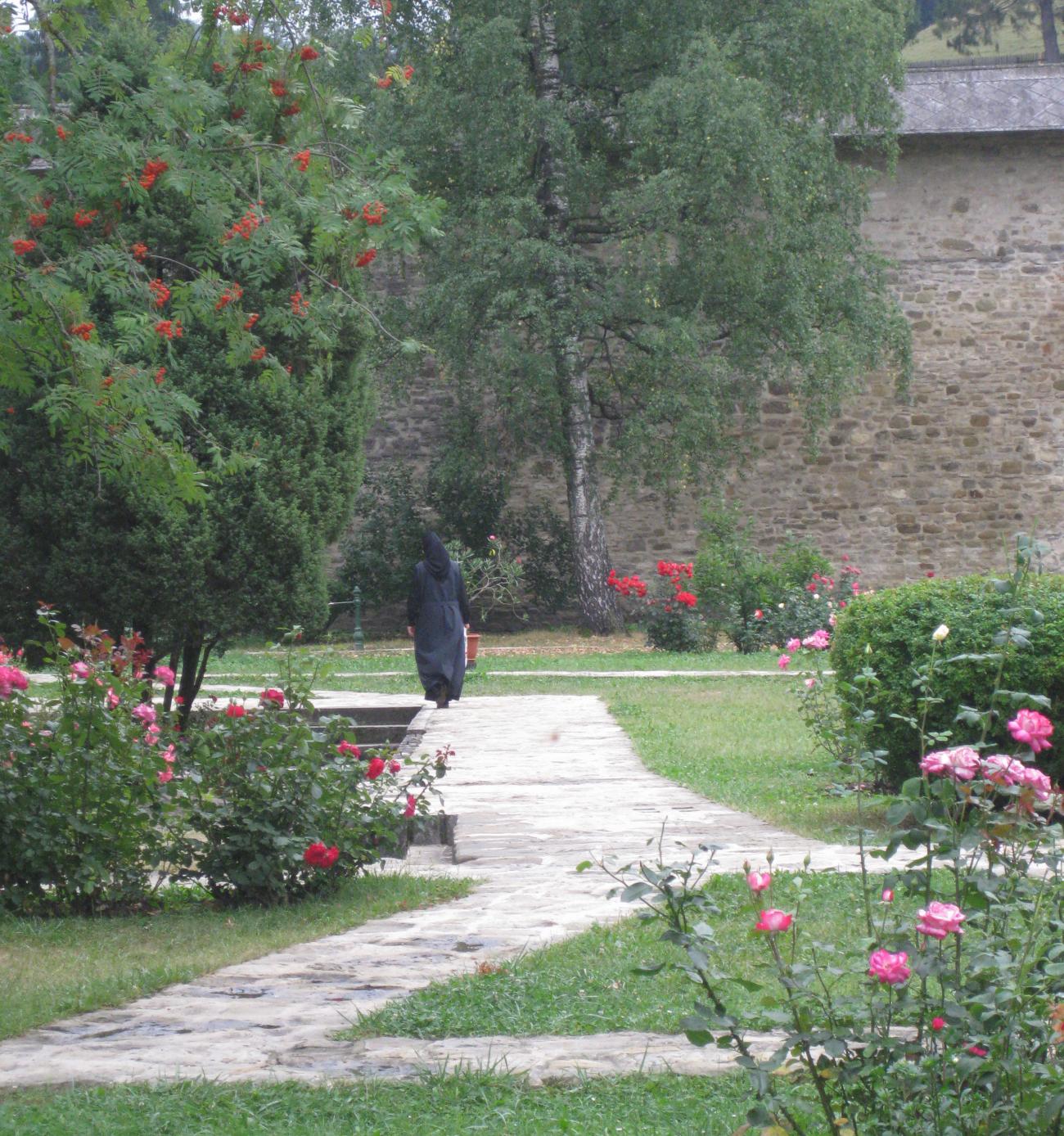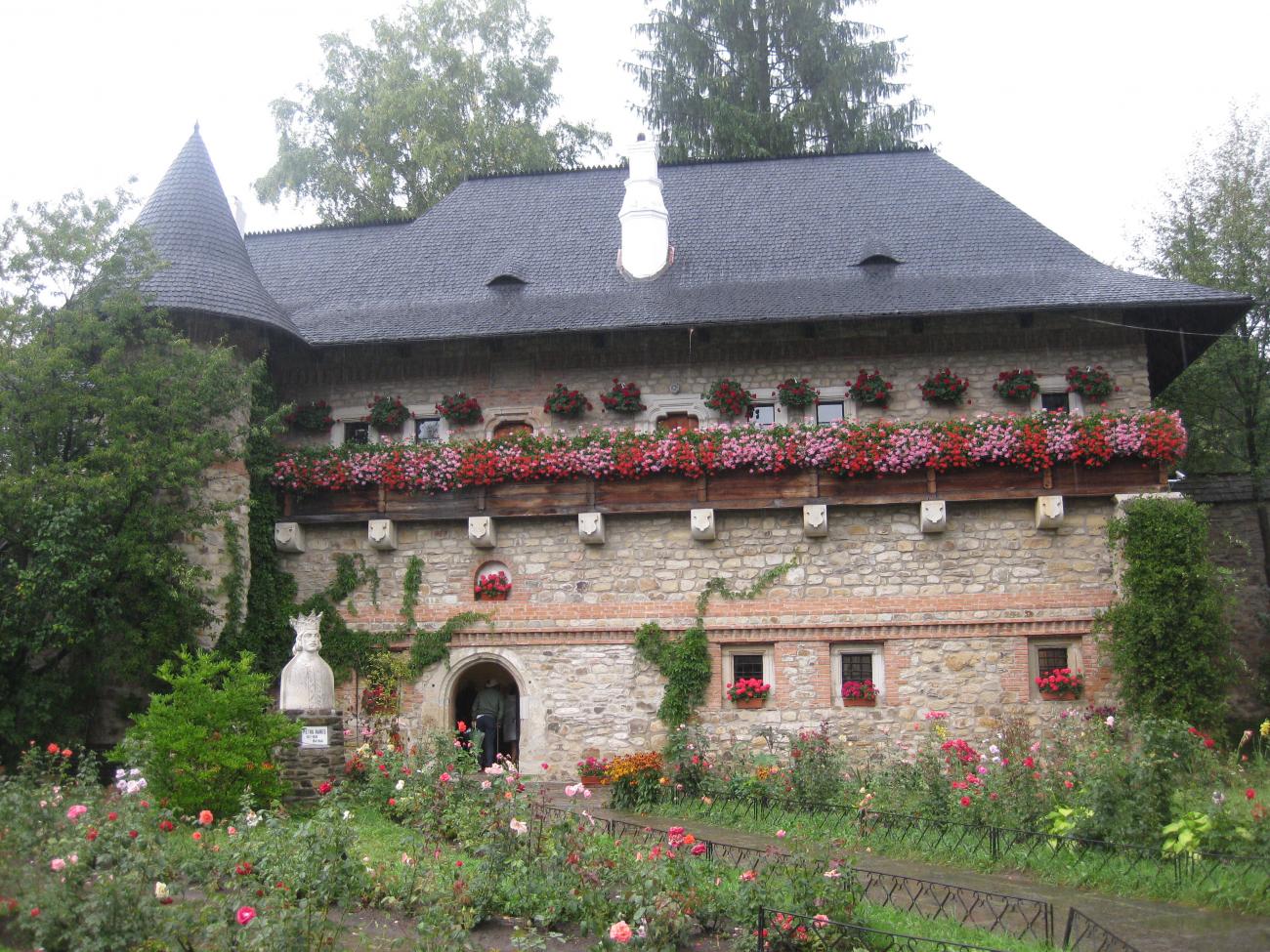With the majority of them deemed UNESCO World Heritage Sites, Bucovina’s painted monasteries are as distinctive as they are renowned. Built over an extended period in the middle of the last millennium many of the impressive frescoes have been retained to such a high degree that a number of them look as though they could have been painted yesterday.
How did the painted monasteries come about?
Thought to have been created during the period when the area was under attack from the Ottoman Turks, the local soldiers painted the frescoes as a way of telling biblical stories to their fellow parishioners, particularly as the majority were illiterate.
The frescoes

Using paints suitable for painting into the plaster of the walls there was a period of approximately 8 hours to decorate each area before the plaster set – no mean feat considering the level of detail and precision of each individual painting – there was certainly no second chance for touch-ups!
Covering the inside and outside of the monastery walls, north facing exterior walls have generally lost their paintings to the elements whilst those facing other directions prevail.
Little is known about whether sketches were done beforehand to prepare for each fresco, but there is no denying that each tells its own unique story. Some of my particular favourites were the Siege of Constantinople and the Last Judgement frescoes at Moldovița Monastery and the story of Moses and the Apocalypse at Sucevita Monastery. The images are very detailed and sometimes rather graphic, but that all adds to the beauty of it all as the pictures truly do tell a thousand words. As one of our group put it, if lessons at school were taught in a similar way, they would be far more interesting!
Sucevita is thought to have been the last painted monastery, built between 1582 – 1601, and it certainly is one of the most impressive. The ‘Ladder of Virtues’ portrayed on its exterior is a real highlight, depicting monks and nuns at various stages on the ladder, whilst others fall from grace. The small museum also displays other relevant pieces of art and offers great views from the first floor towards the monastery.
Visitor etiquette

Etiquette is simple – men should avoid shorts and hats and ladies should cover their shoulders, preferably wearing trousers or long skirts, although apron style skirts can easily be borrowed if required. Photos can be taken outside, but not inside for fear of damaging the frescoes – and this approach continues to pay off given their pristine condition 400 – 500 years later. Postcards are available to buy if you want to take home images of the beautiful interior frescoes.
Why visit?

With beautiful grounds and wandering nuns in residence it’s easy to pass a few hours taking it all in. Regardless of your faith, the monasteries are an enchanting visit. The stories depicted are as relevant today as they ever have been and, although rather gory in parts, the ability of each to educate and inform is captivating. For me personally, the painted monasteries are like nowhere else I have ever visited and are a true highlight in a country offering such diversity and so many wonderful cultural sites.
WF Marketing Executive Emma has just returned from our Walking in Romania: Along the Enchanted Way group tour.
